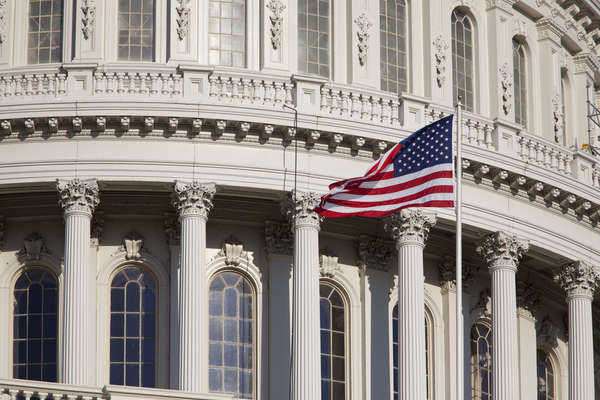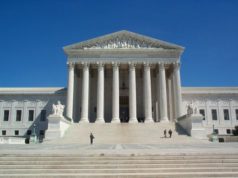
The issue of wiretapping has been contentious in the United States for decades. With the rise of digital communication in recent years, the issue has become even more complex. The Supreme Court has had to grapple with the question of how much power the government should have to monitor the communications of its citizens. This article will explore the Supreme Court’s history with the issue of wiretapping, including its most significant decisions and their relevance to current debates.
The concept of wiretapping dates back to the early 20th century when law enforcement agencies began to use it as a tool to gather evidence for criminal investigations. In the years that followed, the practice became increasingly common, and the government began to use it for intelligence-gathering purposes as well. However, there was little regulation of the practice, and it was often abused.
In 1967, the Supreme Court took up the issue of wiretapping for the first time in the case of Katz v. United States. In this case, the Court had to determine whether the Fourth Amendment’s protection against unreasonable searches and seizures extended to wiretapped conversations. The Court held that it did and declared that the government must obtain a warrant before wiretapping an individual’s communications.
This decision was significant as it established the principle that wiretapping was subject to the same constitutional protections as physical searches. The Court also recognized that wiretapping was a particularly intrusive form of surveillance that required heightened protection. As a result of this decision, law enforcement agencies had to obtain a warrant to wiretap an individual’s communications, and they had to demonstrate probable cause to do so.
The question of warrantless wiretapping came before the Supreme Court again in 1972 in the case of United States v. United States District Court. In this case, the Court had to determine whether President Nixon had the authority to order warrantless wiretaps of individuals suspected of being involved in domestic terrorism. The Court held that he did not and reaffirmed the principle that wiretapping was subject to the Fourth Amendment.
This decision was significant as it established the principle that wiretapping could not be carried out without a warrant, even in the interests of national security. The Court recognized that the government had a legitimate interest in protecting national security but held that this interest could not be used to justify warrantless wiretapping.
The legal framework for wiretapping was further refined in the 1980s when Congress passed the Foreign Intelligence Surveillance Act (FISA). This law established a framework for the government to obtain warrants to conduct electronic surveillance for foreign intelligence purposes. The law also created a special court, known as the Foreign Intelligence Surveillance Court (FISC), to review and approve these warrants.
However, the government’s use of wiretapping continued to be a contentious issue, and the Supreme Court continued to grapple with questions of how much power the government should have to monitor the communications of its citizens. In 2013, the Supreme Court heard arguments in the case of Clapper v. Amnesty International USA. In this case, the Court had to determine whether a group of human rights organizations had standing to challenge the constitutionality of a provision of FISA that allowed the government to conduct surveillance on foreign individuals outside the United States without a warrant.
The Court ultimately held that the organizations did not have standing to bring the case and did not address the constitutional issues at stake. However, the case highlighted the ongoing debate over the balance between national security and civil liberties.
In 2015, the Supreme Court heard arguments in another case related to wiretapping, United States v. Jones. In this case, law enforcement authorities had placed a GPS tracking device on a suspect’s car without a warrant and had used this device to monitor the suspect’s movements for over a month. The Court held that this use of a tracking device constituted a search under the Fourth Amendment and that a warrant was required.
This decision was significant as it established that the use of new surveillance technologies was subject to the same constitutional protections as established forms of surveillance, such as wiretapping. The Court recognized that the use of technology had the potential to greatly expand the government’s surveillance capabilities and that constitutional protections needed to be adapted to address this new reality.
Most recently, the Supreme Court heard arguments in the case of Carpenter v. United States in 2018. In this case, law enforcement authorities had obtained historical cell phone location data for a suspect without a warrant and had used this data to place the suspect near the location of several burglaries. The Court held that the Fourth Amendment required a warrant for the government to obtain historical cell phone location data.
This decision was significant as it established that the government’s use of digital technologies to monitor individuals’ movements was subject to the same constitutional protections as established forms of surveillance. The Court recognized that the vast amounts of data produced by modern technologies could allow the government to monitor an individual’s movements and activities in unprecedented detail and that constitutional protections needed to be adapted to this new reality.
In conclusion, the Supreme Court’s history with the issue of wiretapping demonstrates the ongoing tension between national security and civil liberties. The Court has recognized that wiretapping is a highly intrusive form of surveillance that requires heightened protection, but it has also acknowledged the government’s interest in protecting national security. The Court’s decisions have established the principle that wiretapping must be subject to a warrant and probable cause and have adapted the Fourth Amendment’s protections to address the use of new surveillance technologies. As digital communication continues to evolve, the Supreme Court’s role in balancing these competing interests is likely to remain a crucial one.
Wiretapping may be described as the way in which conversations may be taken or recorded without persons having knowledge of such seizure. This is achieved by way of the use of electronic devices, for instance, which transmit the sound to other locations.

























